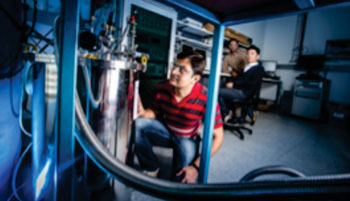Low-Cost MRI Technology to Boost Access to MRI Exams in Developing Countries
By MedImaging International staff writers
Posted on 25 Aug 2015
Researchers have developed a prototype of an innovative, low-cost Magnetic Resonance Imaging (MRI) magnet and cooling system.Posted on 25 Aug 2015
The system uses a superconducting magnet made from the readily available elements Magnesium and Boron, and cooled by solid nitrogen. Such magnets would weigh much less than conventional MRI magnets and could enable the development of mobile or bench-top MRI systems for use in remote areas. New MRI systems based on this technology would reduce the cost, and make MRI imaging more accessible for patients in developing countries.

Image: Prototype of new low-cost MRI Magnet developed by researchers at the University of Wollowong (Photo courtesy of the University of Wollowong).
The magnets, developed by researchers at the University of Wollowong (NSW, Australia), operate at higher temperatures than conventional MRI magnets. The new magnets could maintain their critical operating temperature, even during power outages.
The researchers also developed a new technique to join the superconductor sections. Details of the technique were published in the journal Superconductor Science and Technology, and involve cold-joining the ends of the wire, and then treating the coil in a furnace to retain its superconducting properties
Associate Professor Kim, said, “We’ve shown that our joining method meets the technical needs for use in MRI. If we can get an industry partner we could take this to the next level in providing healthcare services for millions of people worldwide. After 30 years of commercial production, superconducting MRI systems have reached a state of maturity. The demands of the healthcare industry are for high efficiency, low cost and reliable systems.”
Related Links:
University of Wollowong
Video: Researchers from the University of Wollongong have developed a system that could reduce medical costs for people living in regional areas








 Guided Devices.jpg)





